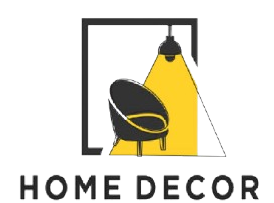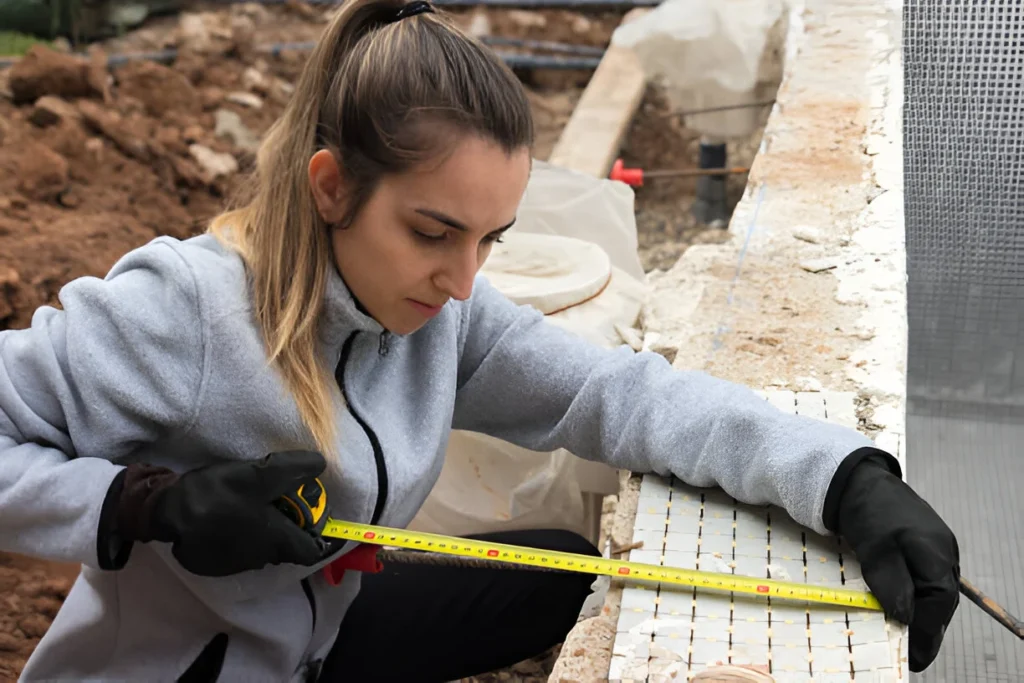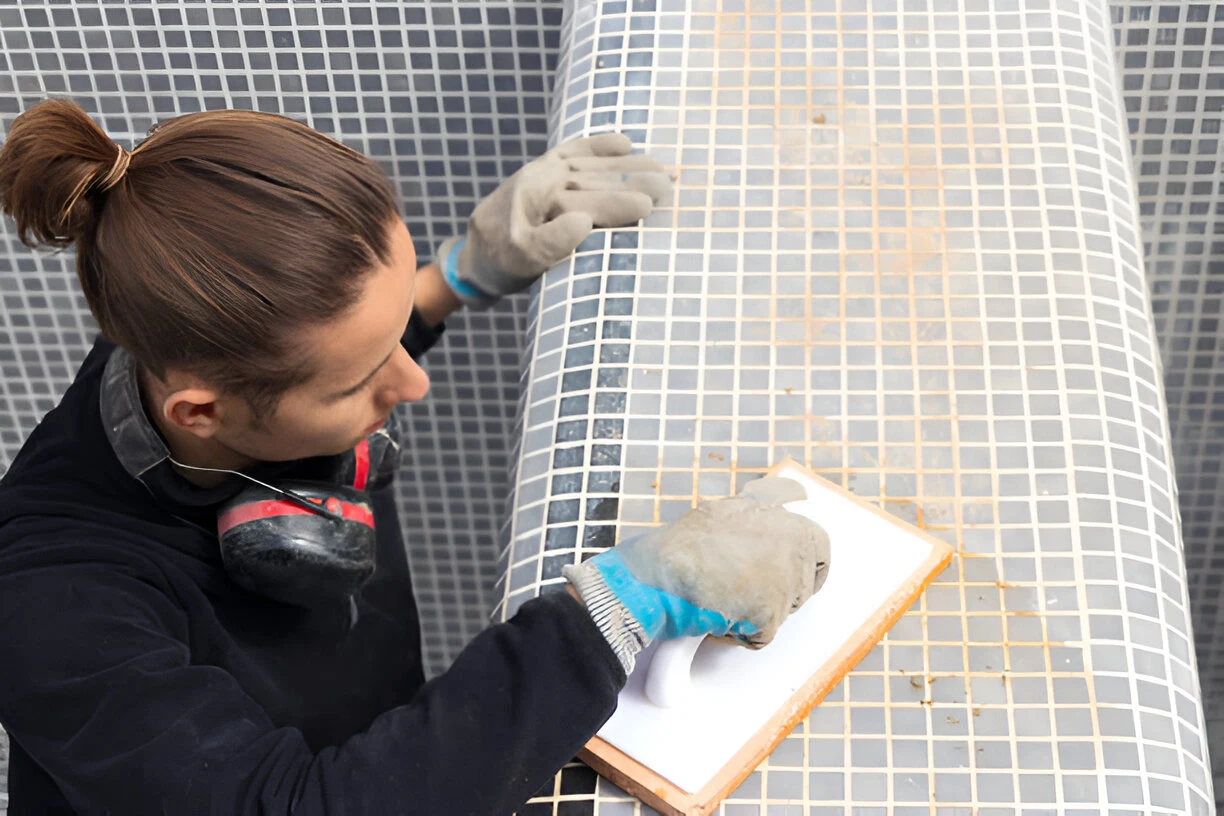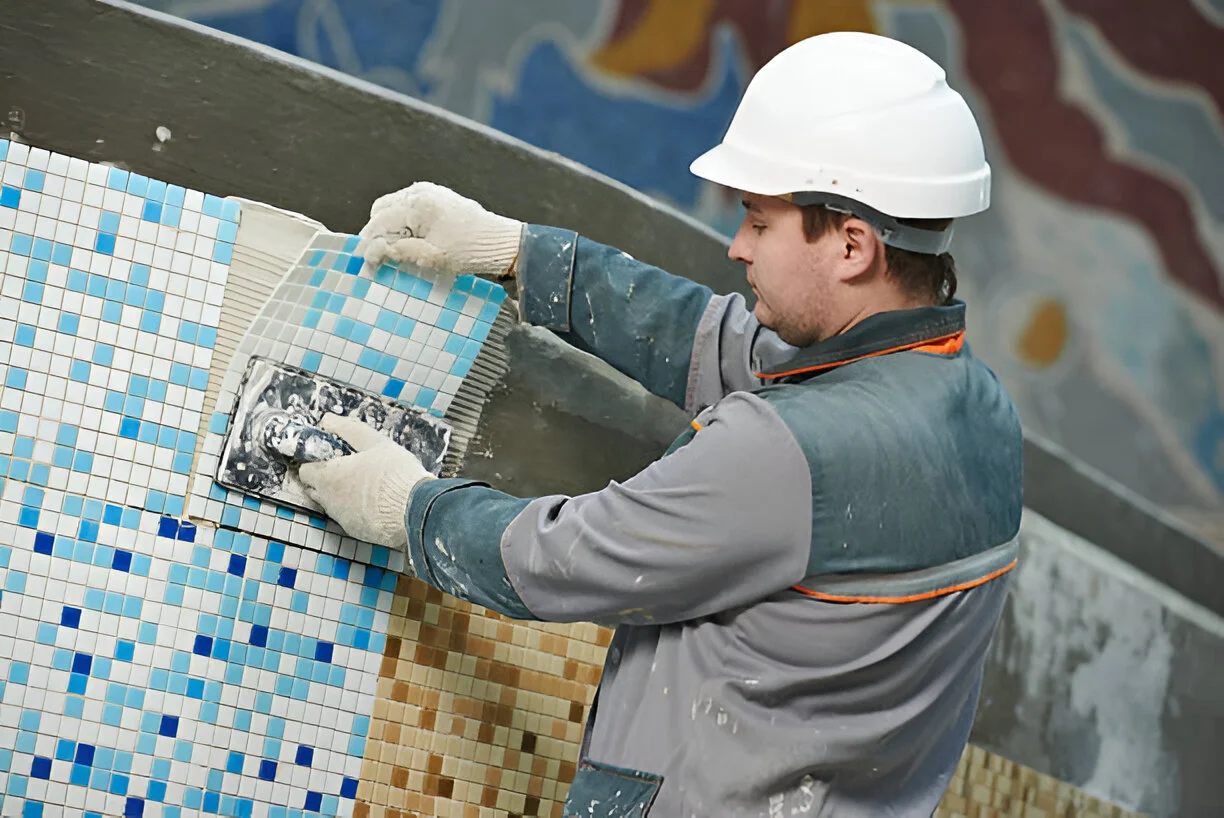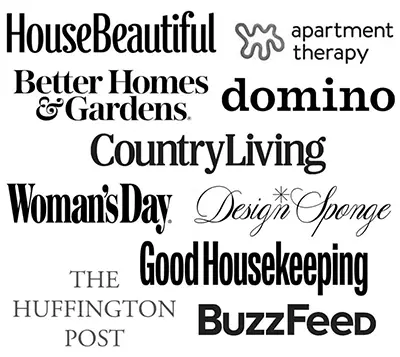Picture this: It’s a bleak February afternoon in Minneapolis. The thermometer reads -15°F outside, and another winter storm warning flashes across your phone screen. While your neighbors lament another month of winter confinement, you’re enjoying a leisurely swim in your temperature-controlled aquatic paradise where the humidity is perfectly balanced and the water sparkles under strategically placed lighting. This isn’t a fantasy reserved for luxury resorts; it’s the reality created by masterful indoor swimming pool builders who understand the art and science of transforming residential spaces.
Here at BehindDecor, we’ve witnessed firsthand how exceptional indoor pool installations can revolutionize how families live, entertain, and maintain wellness throughout the year. An indoor pool represents more than a luxury addition; it’s a comprehensive lifestyle enhancement that provides year-round therapeutic benefits, creates a stunning focal point for your home, and becomes a cherished gathering space for friends and family. The distinction between a successful project and a problematic installation hinges entirely on one critical factor: your selection of qualified indoor swimming pool builders with specific expertise in indoor aquatic environments.
This exhaustive guide represents hundreds of hours of research, interviews with industry experts, and analysis of successful projects across climate zones. We’ll provide you with the knowledge necessary to navigate the complexities of indoor pool construction, understand the true investment required, and identify the distinguishing characteristics of top-tier indoor swimming pool builders.
The Engineering Marvel Behind Modern Indoor Pool Environments
While outdoor pool construction follows relatively standardized processes, indoor pools present a unique set of engineering challenges that demand specialized expertise. The most accomplished indoor swimming pool builders approach these projects as integrated systems rather than simple installations.
The Physics of Humidity Management
Water evaporation represents the most significant technical challenge in indoor pool environments. The evaporation rate from a typical residential indoor pool can reach 2-3 pounds of water per square foot annually, creating a substantial moisture load that must be properly managed. This isn’t merely about comfort; it’s about structural integrity.
Superior indoor swimming pool builders implement comprehensive humidity control strategies that typically include:
Active Dehumidification Systems
- Dedicated pool dehumidifiers ($4,000-$20,000): These specialized systems remove moisture from air while reclaiming heat to warm pool water
- Ventilation systems ($4,000-$10,000): Designed to introduce dry outdoor air while exhausting moist indoor air
- Energy recovery ventilators: Advanced systems that transfer heat between incoming and outgoing air streams
Passive Moisture Control
- Vapor barriers ($0.50-$0.75 per sq. ft.): Installed behind walls and beneath floors to prevent moisture migration
- Sloped decking: A Critical design element that directs splashed water back toward the pool
- Drainage systems: Integrated into deck designs to capture overflow and condensation
The most sophisticated indoor swimming pool builders often recommend automated pool covers ($5,000-$22,000), which can reduce evaporation by 50-70% while decreasing heating costs by approximately 30-50%.
Structural Considerations and Material Science
Indoor pool environments demand specialized materials that can withstand constant exposure to elevated humidity levels and chemical exposure:
Wall and Ceiling Systems
- Moisture-resistant drywall (often purple or green board) with appropriate vapor barriers
- Cement backer board systems for tiled areas
- Non-corrosive metal framing (stainless steel or aluminum) in critical areas
- Fiberglass-reinforced panels in high-humidity zones
Surface Materials
- Non-slip decking with proper drainage capabilities
- Chemical-resistant finishes on all surfaces
- Mold-resistant insulation throughout the enclosure
The Financial Landscape: Understanding True Investment Requirements
The financial commitment for an indoor pool project extends beyond the basic pool structure itself. Discerning indoor swimming pool builders provide comprehensive cost breakdowns that account for all project components.
Comprehensive Cost Analysis
| Component | Investment Range | Key Considerations |
| Pool Structure | $35,000-$150,000 | Material selection dramatically impacts cost and maintenance requirements |
| Enclosure Construction | $25,000-$200,000+ | Includes walls, roof, and integration with the existing structure |
| Mechanical Systems | $8,000-$30,000 | Dehumidification, ventilation, and specialized HVAC |
| Electrical & Plumbing | $5,000-$20,000 | Dedicated circuits, gas lines, and drainage modifications |
| Finishes & Features | $10,000-$75,000+ | Decking, lighting, automation, and water features |
Material-Specific Investment Analysis
Concrete Pools (Gunite/Shotcrete)
- Investment: $60,000-$150,000+
- Advantages: Complete design flexibility, extreme durability, repairable surface
- Maintenance Considerations: Typically requires resurfacing every 10-15 years ($10,000-$20,000)
Fiberglass Pools
- Investment: $45,000-$100,000
- Advantages: Non-porous surface (reduced chemical usage), rapid installation, low maintenance
- Limitations: Size restrictions and limited customization options
Vinyl Liner Pools
- Investment: $40,000-$80,000
- Advantages: Lower initial investment, smooth surface, can be custom-shaped
- Long-term Costs: Liner replacement required every 8-12 years ($3,000-$5,000)
Operational Economics
Beyond the construction investment, prudent homeowners should understand ongoing operational costs:
Energy Consumption
- Heating: $150-$400 monthly, depending on pool size, insulation, and climate
- Dehumidification: $75-$200 monthly, based on system efficiency and usage patterns
- Pump Operation: $50-$150 monthly (variable speed pumps can reduce this by 70%)
Maintenance Requirements
- Chemical Maintenance: $75-$150 monthly for professional service or $30-$75 for DIY
- Filter Cleaning: $100-$300 annually for professional service
- System Maintenance: $300-$600 annually for equipment servicing
The Design Process: Collaborative Creation with Expert Indoor Swimming Pool Builders
The most successful indoor pool projects emerge from a collaborative design process that balances aesthetic vision with technical requirements. Exceptional indoor swimming pool builders function as creative partners who guide homeowners through critical design decisions.
Spatial Planning Considerations
Space Allocation Guidelines
- Pool Area: Minimum 12’x24′ for functional swimming
- Deck Space: 4-8 feet minimum on all sides for safe circulation
- Equipment Room: 100-200 square feet with proper ventilation and access
- Ceiling Height: Minimum 8-10 feet above water level for proper air circulation
Integration with Existing Structures
- Structural modifications are often required for load-bearing considerations
- Vapor barriers must be continuous between existing and new construction
- Sight lines should be considered for visual integration with living spaces
Environmental Control Systems Design
Advanced indoor swimming pool builders employ sophisticated calculation methods to properly size mechanical systems:
Humidity Load Calculations
- Pool surface area and water temperature
- Air temperature and desired relative humidity
- Room volume and insulation values
- Occupancy and anticipated usage patterns
Ventilation Requirements
- Air changes per hour (typically 4-6 for pool rooms)
- Make-up air requirements for proper pressure relationships
- Exhaust placement to capture moisture at the source
Technological Innovations in Indoor Pool Construction
The field of indoor pool design continues to evolve with technological advancements that improve efficiency, comfort, and enjoyment.
Cutting-Edge Dehumidification Technology
Desiccant-Based Systems
- Operation: Use chemical attraction to remove moisture from the air
- Advantages: Superior performance in colder climates, lower operating costs
- Investment: $15,000-$30,000 for residential applications
Energy Recovery Ventilation
- Operation: Transfer heat between incoming and outgoing air streams
- Efficiency: Can recover 70-80% of energy that would otherwise be lost
- Climate: Particularly effective in extreme climates
Water Treatment Advancements
Ozone and UV Systems
- Benefits: Reduce chlorine usage by 50-90%, minimize chemical odors
- Investment: $2,000-$5,000 for residential systems
- Maintenance: Requires annual bulb replacement ($200-$400)
Salt Chlorination Systems
- Operation: Convert salt to chlorine through electrolysis
- Advantages: Softer water feel, reduced chemical handling, consistent sanitation
- Considerations: Higher initial investment, potential corrosion issues without proper materials
Automation and Control Systems
Modern indoor pools increasingly feature sophisticated control systems that integrate:
- Water chemistry monitoring and adjustment
- Lighting control with customizable scenes
- Temperature regulation for both water and air
- Cover operation and safety systems
- Remote monitoring and control via smartphone applications
The Selection Process: Identifying Exceptional Indoor Swimming Pool Builders
Choosing the right construction team represents the most critical decision in your project. The distinction between adequate and exceptional indoor swimming pool builders manifests in multiple dimensions.
Evaluation Criteria for Builders
Technical Expertise
- Specialized training in indoor pool environments
- Understanding of building science principles
- Knowledge of local building codes specific to indoor pools
- Experience with specialized materials and systems
Project Management Capabilities
- Detailed scheduling and communication protocols
- Subcontractor management processes
- Problem-solving methodologies for unexpected challenges
- Quality control systems throughout construction
Design Integration Skills
- Ability to translate aesthetic vision into technical reality
- Space planning expertise for optimal functionality
- Material selection guidance based on performance characteristics
- Lighting design proficiency for ambiance and functionality
Red Flags in Builder Selection
During your evaluation process, be wary of indoor swimming pool builders who:
- Underestimate humidity control requirements or costs
- Lack specific indoor pool references with verifiable results
- Propose inadequate ventilation or dehumidification solutions
- Cannot explain the technical aspects of indoor pool engineering
- Provide vague or incomplete cost estimates
Regional Considerations for Indoor Pool Projects
Climate significantly influences indoor pool design requirements. Expert indoor swimming pool builders adapt their approach based on geographic location.
Cold Climate Considerations (Northern States)
Enhanced Insulation Requirements
- Wall insulation: R-20 minimum recommended
- Ceiling insulation: R-30 to R-40, depending on roof type
- Foundation insulation: Critical to prevent heat loss through the slab
Condensation Management
- Increased vapor barrier requirements in extremely cold climates
- Attention to thermal bridging at all structural connections
- Condensation analysis for glass surfaces and skylights
Heating System Design
- Higher capacity heating systems for winter operation
- Heat recovery systems from dehumidification equipment
- Supplemental heating sources for extremely cold periods
Warm Climate Considerations (Southern States)
Cooling Load Management
- Solar heat gain control through glazing selection
- Ventilation strategies for natural cooling when conditions permit
- Air conditioning integration for occupant comfort
Humidity Challenges
- Higher capacity dehumidification systems due to elevated outdoor humidity
- Pressurization strategies to prevent humid air infiltration
- Enhanced vapor barriers to manage moisture drive directions
The Construction Process: What to Expect from Quality Indoor Swimming Pool Builders
A well-executed indoor pool project follows a meticulous sequence that ensures proper integration and performance.
Phase 1: Pre-Construction Planning
Site Evaluation
- Structural assessment of existing conditions
- Access considerations for equipment and materials
- Utility availability and capacity verification
Engineering Documentation
- Structural calculations for loads and modifications
- Mechanical drawings for HVAC and dehumidification systems
- Plumbing and electrical schematics specific to pool requirements
Phase 2: Structural Implementation
Enclosure Construction
- Foundation work with proper waterproofing and insulation
- Wall construction incorporating vapor barriers and moisture management
- Roof systems designed to handle humidity loads
Pool Installation
- Excavation and forming according to design specifications
- Plumbing and electrical rough-in before shell installation
- Shell construction using selected materials and techniques
Phase 3: Systems Integration
Mechanical Systems Installation
- Dehumidification equipment placement and ductwork
- Ventilation systems with proper balancing
- Heating systems integration with pool water and air
Finish Applications
- Decking installation with proper slope and drainage
- Wall and ceiling finishes resistant to moisture
- Lighting installation for both function and ambiance
Phase 4: Commissioning and Training
System Startup
- Water filling and chemical balancing
- Equipment testing under load conditions
- Control system programming and verification
Owner Education
- Operation training for all systems
- Maintenance requirements and schedules
- Troubleshooting guidance for common issues
Long-Term Performance: Ensuring Your Investment Endures
The relationship with quality indoor swimming pool builders shouldn’t end at project completion. Ongoing performance depends on proper maintenance and occasional updates.
Maintenance Best Practices
Daily/Weekly Tasks
- Water chemistry testing and adjustment
- Surface skimming and cleaning
- System visual inspection for leaks or issues
Monthly Responsibilities
- Filter cleaning or replacement as needed
- Equipment inspection for proper operation
- Dehumidification system maintenance according to manufacturer specifications
Annual Requirements
- Professional system servicing, including heat exchangers and components
- Comprehensive inspection of all structural and mechanical elements
- Water drainage and refill, if recommended by water quality conditions
Modernization Opportunities
As technology evolves, even well-built indoor pools may benefit from updates:
Energy Efficiency Upgrades
- Variable speed pumps can reduce energy consumption by 70-80%
- LED lighting conversions decrease energy use and heat generation
- Control system upgrades improve automation and monitoring capabilities
Comfort and Experience Enhancements
- Water feature additions create visual interest and auditory ambiance
- Therapeutic elements like air loungers or therapy jets
- Automation expansions for simplified operation and control
Frequently Asked Questions About Indoor Swimming Pool Builders
How long does inner pool construction generally take?
Most inner pool systems bear 3- 6 months, depending on design complexity, structural variations, and the moxie of your inner swimming pool builders.
Do inner pools increase property value?
Professionally erected inner pools can increase home value by 5 – 7% when integrated duly by educated inner swimming pool builders with climate control.
What moisture controls are demanded for inner pools?
Advanced dehydration systems are essential to help eaprevent rth and structural damage a hallmark of good inner swimming pool builders.
Can I convert a living room into an indoor pool?
Yes, but it requires significant structural and environmental variations, always consult technical inner swimming pool builders for feasibility assessments.
Are inner pools more precious than outdoor pools?
Yes, due to quadrangle costs, climate control systems, and technical construction handled by expert inner swimming pool builders.
What conservation is unique to inner pools?
Inner pools bear strict moisture operation, ventilation keep, and vapor-resistant accoutrements, tasks stylishly managed by seasoned inner swimming pool builders.
Conclusion: The Path to Your Perfect Indoor Aquatic Environment
The journey to creating your ideal indoor pool represents one of the most significant and rewarding investments you can make in your home and quality of life. Unlike many home improvements that offer primarily aesthetic benefits, a well-designed indoor pool provides tangible daily benefits that enhance physical health, mental well-being, and social connections throughout the year.
The distinction between a problematic installation and a transformative addition to your home rests entirely on the expertise of your selected indoor swimming pool builders. These specialists bring more than construction skills—they provide integrated solutions that balance architectural vision with engineering precision, aesthetic appeal with functional performance, and initial investment with long-term value.
As we’ve explored throughout this comprehensive guide, successful indoor pool projects emerge from meticulous planning, technical expertise, and careful attention to the unique demands of enclosed aquatic environments. From humidity management to material selection, mechanical systems to finishing details, each element contributes to the overall performance and enjoyment of your investment.
At BehindDecor, we believe that your home should be a sanctuary that supports your best life, and for many homeowners, an indoor pool represents the ultimate expression of this philosophy. It’s a space where inclement weather never cancels plans, where exercise is always accessible, and where memories are made regardless of the season.
If you’re contemplating joining the growing community of indoor pool owners, we encourage you to begin with education, proceed with careful builder selection, and invest in quality throughout the process. Your future self—enjoying a morning swim as snow falls outside or hosting an unforgettable poolside gathering in the depths of winter- will appreciate the thoughtful approach.
